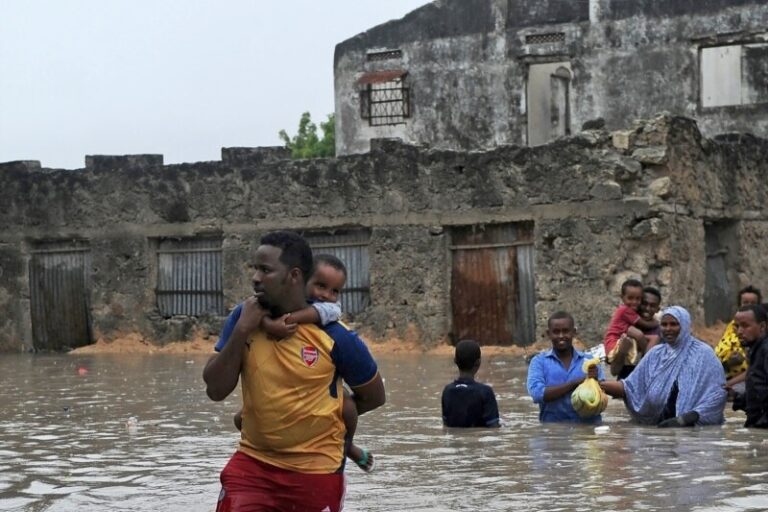

floods in somalia lead to destruction and emigration
In March 2023, Ethiopia and Somalia were hit by flash flooding caused by torrential rains, which resulted in the deaths of dozens of people and affected 300,000. The region had been suffering from an acute drought for almost three years before the deluge that caused so much damage. According to a study from Crop Monitor, certain regions of Ethiopia received 5 to 10 centimeters (about 2 to 4 inches) more rain than is typical for the first 25 days of March. This was a significant increase.
According to Caroline Wainwright, a climate scientist at Cardiff University in the United Kingdom, “normally, the long rains begin in Kenya and move north to Ethiopia and Somalia.” Wainwright made this statement. “However, the rains began at the same time this year, and the last two weeks of March were extremely wet in all three countries.”
Rainfall ranging from light to severe in the Ethiopian highlands caused the banks of the Shabelle and Juba rivers to become flooded. According to the United Nations Office for the Coordination of Humanitarian Affairs (UN OCHA), along the banks of the two rivers in southern Somalia and eastern Ethiopia, homes, schools, and healthcare facilities were damaged. The Moderate Resolution Imaging Spectroradiometer (MODIS) on NASA’s Terra satellite captured the above image, which shows flooding along the Shabelle River in the Somali region of Ethiopia. The image may be found to the right of this paragraph.
The Horn of Africa has been experiencing some of the worst drought conditions in recorded history for almost three years now. Since late 2020, Ethiopia and Somalia have seen five unsuccessful rainy seasons, which have resulted in the displacement of 1.4 million Somali people and the loss of 3.8 million livestock. Since 1981, the Shabelle and Juba river basins have had their driest conditions throughout this time period.
Wainwright stated that the floods did not simply make up for the drought that had occurred for the previous three years. Recent findings from her investigation into the causes and effects of rainfall variability in East Africa revealed that from the middle of the 1980s until 2010, the region’s protracted rains had a trend toward being drier. According to the findings of the research team’s analysis of climate projections, the short showers may end up delivering more precipitation than the lengthy rains between the years 2030 and 2040.
Recent rains have caused flooding on more than 1,000 hectares of cropland, which places a strain on the economies of Ethiopia and Somalia, both of which rely heavily on agriculture. Rainwater serves as the primary source of irrigation for the majority of the cropland in the area, and in these countries, agriculture employs 67 and 80 percent of the workforce, respectively. Even though rain can provide some relief, prolonged dryness followed by heavy rain that lasts for a long time can destroy crops and topsoil. In addition, the majority of the farms in the area do not have the necessary infrastructure to store water for later use.
Even with the unusually early and strong rains in March, climate models show that this year’s prolonged rains will be drier than average, and it is likely that dry conditions will persist.
The U.S.-based driver training company Zutobi analyzed road safety worldwide and found South Africa stays last in driving danger since…
The Basketball Africa League (BAL) returns for its 2025 season with exciting changes and developments. Since 2019 the NBA-linked basketball…
The Somali president supports their military forces to eliminate the threats from Al-Shabaab, ISIS, and Al-Qaeda. The Somali National Army…
UAE President Sheikh Mohamed bin Zayed Al Nahyan held talks with President Faustin Archange Touadéra of the Central African Republic…
African football teams struggle intensely in the World Cup Qualification rounds to earn their place on the international football stage.…
The journey toward the 2026 FIFA World Cup is rapidly intensifying for all African teams, who now hold a historical…
This website uses cookies.